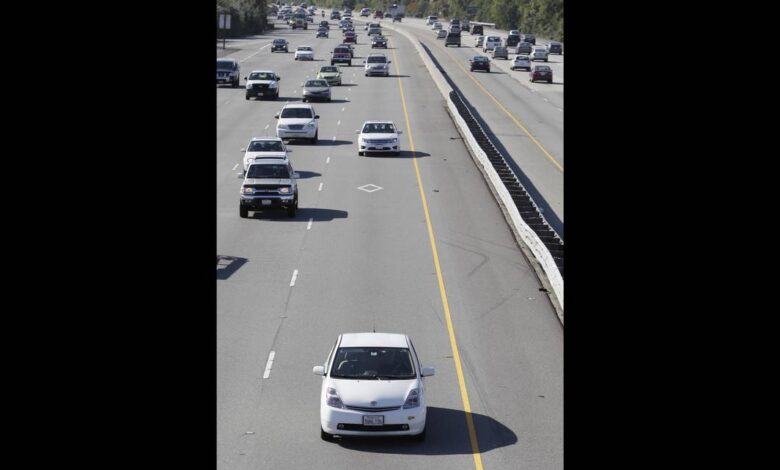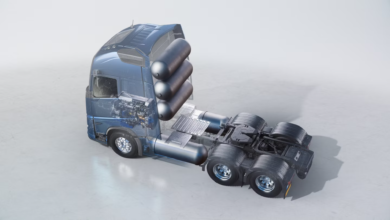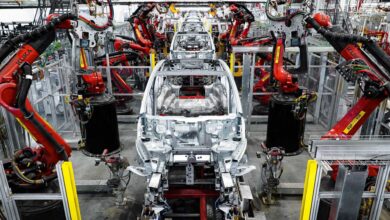Electric cars should no longer qualify for express lanes

A Toyota Prius tools down a California carpool lane in 2011. The state has revised a clean-air sticker program allowing solo drivers of electric or plug-in hybrid vehicles to use carpool lanes to restrict those privileges.
The Associated Press file
When I was environmentally virtuous by 2009 standards, I demonstrated it by purchasing my trusty Toyota Prius, which purrs to this day.
California rewarded me with a yellow decal that granted me free access to California’s freeway carpool lanes and I was overjoyed.
A few years later, California moved the climate change goalpost and only qualified all-electric and plug-in hybrids for the special carpool lane status, sticking me back in the interstate version of steerage yet again. Changing and updating the rules became a cottage industry for the California Legislature. The qualifying stickers changed from purple to orange to blue to yellow (again) to green and now, burgundy.
The era of these special stickers will come to an end next year. It is exactly the right thing to do. Temporary government incentives to address temporary needs must eventually come to an end.
Motivating a transition away from gas-guzzling vehicles is yesterday’s news in California. By 2035, California is supposed to sell only electric vehicles as part of a plan to decarbonize the economy by 2045, which means stopping or reducing carbon gases, like carbon dioxide, from being released into the atmosphere.
If everybody is driving an electric vehicle, everybody can’t be in that carpool lane.
The purpose of the “express lane” is changing along with the climate. It can no longer be for the fortunate few who can afford a Tesla to enjoy a shorter commute. The express lane has two legitimate occupants that can pass through at no charge: A carpool or a high-occupancy vehicle, like a bus. The other is the solo motorist who is willing to pay a toll that subsidizes the transportation system in exchange for getting to the destination faster.
Although the Sacramento region doesn’t have toll lanes yet, construction could begin as soon as this year on a project in both Yolo and Sacramento counties.
The regional transportation planners at the Sacramento Area Council of Governments, for example, are relying on an aggressive transformation to carpool lanes to help reduce overall emissions. On interstates 5 and 80, for example, SACOG envisions two carpool/toll lanes at rush hours, including one of the existing lanes.
This could be a huge change from the status quo, but the California Department of Transportation is refusing to even study the regional plan as it looks to widen 80 between Sacramento and Davis.
This head-in-the-sand mentality delays needed progress on carpool lanes and defeats the broader public message the Newsom administration should be sending that change is necessary.
It was only a decade ago that the carpool lane sticker was a huge incentive to buy a qualifying car. One 2016 study estimated that at least 25 percent of Californians bought their electric cars or plug-in hybrids simply to go faster on the freeway, but this is not sustainable any longer. Everyone can’t be in an express lane, particularly those single-passenger scofflaws who have never belonged there in the first place.
Facing climate change as a shared challenge is the only possible way California can succeed as a pioneer. Nobody gets a pass.



